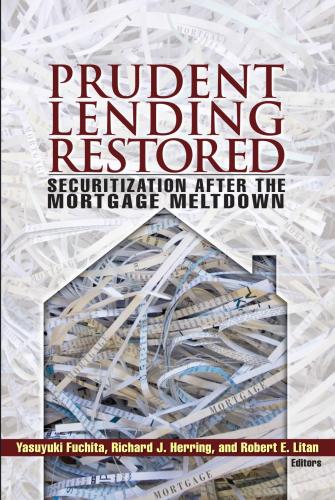Studies in this week’s Hutchins Roundup find mortgage rates in 2020 did not fall as much as interest rates, high unemployment increases recruiting costs for firms, and more.
Want to receive the Hutchins Roundup as an email? Sign up here to get it in your inbox every Thursday.
Declines in interest rates in 2020 not fully passed through to mortgage rates
While 2020 saw the lowest mortgage rates for borrowers in decades, an increase in markups by intermediaries kept mortgage rates from falling as much as Treasury rates, find Andreas Fuster of the Swiss National Bank and co-authors. They say, “Hiring new workers and expanding capacity was more difficult than usual,” making the rise in markups even larger than is typical when demand for mortgages rises. In addition, they find that fintech lenders, whose technology-based operations faced fewer pandemic-related frictions, gained market share for complex and labor-intensive mortgages. The authors also find that government-backed credit guarantees and quantitative easing by the Federal Reserve helped to support credit supply in the mortgage market, keeping rates from rising for the typical mortgage despite higher risk of borrowers defaulting due to the pandemic. Government guarantees are unable to eliminate all risks to lenders, however. Lending to higher risk borrowers decreased in the mortgage market.
Workers apply to more jobs in a recession, making it harder for firms to assess who is a good fit
Using data on both employed and unemployed workers from the Survey of Consumer Expectations, Niklas Engbom of New York University finds that changes in job search patterns during recessions raise recruiting costs and discourage job creation. In particular, he finds that the unemployed apply for 10 times more jobs than employed workers but are less than half as likely per application to take a job. Unemployed workers also are less selective about the vacancies for which they apply, costing firms more time and resources to find a good fit from the large pool of applicants. As recruiting costs increase, fewer jobs are created, and high unemployment rates persist. Though an application fee could discourage low quality applicants, the author speculates that firms may worry that fees could discourage low-income but suitable candidates from applying.
New survey data suggests US firms’ inflation expectations are uninformed by monetary policy
Using a new survey of U.S. firms’ inflation expectations over time, Yuriy Gorodnichenko and Bernardo Candia of the University of California, Berkeley, and Olivier Coibion of the University of Texas at Austin find that the inflation expectations of U.S. firms are poorly anchored, and that firms’ decisions are not informed by monetary policy. When it comes to inflation expectations, firms behave more like households than professional forecasters. Like households, firms tend to forecast inflation to be higher than its current trend. There is also less consensus among firms about future inflation – however, most predict long-run levels of inflation to be significantly different from the Federal Reserve’s inflation target of 2%. The authors find U.S. firms’ inattention to inflation dynamics to be consistent with data from other developed economies. “The now long history of low and stable inflation in most advanced economies has removed much of the incentive that firms may have had to pay much attention to monetary policy and inflation,” the authors conclude.
Chart of the week: US home prices surged 13.2% from March 2020
Source: S&P Global
Quote of the week:
“One of the things that’s been very interesting about this pandemic, and actually was evident very early on, is that demand has responded much faster to the marketplace than supply has, and it has taken supply time to catch up. We’re seeing this in a number of different ways, whether it be semiconductors or lumber response for housing or even appliances and their availability for families that are looking to upgrade at their homes. The question is not whether there is that imbalance that happens initially, it is whether that persists over time.” says Raphael Bostic, President of the Atlanta Fed.
“And as I’ve talked to business leaders, what they’ve said is that for many of these things, you’re not expecting them to really last for an extended period. The dynamic that we’re seeing now is not the new steady state dynamic. So there’s a reason to be less concerned. But I do want to emphasize [that] that’s why we talk to people on a repeated basis. I want to know whether their views on this are changing, because if they are changing then that will lead me to have to rethink where our policy should be.”
The Brookings Institution is committed to quality, independence, and impact.
We are supported by a diverse array of funders. In line with our values and policies, each Brookings publication represents the sole views of its author(s).










Commentary
Hutchins Roundup: Mortgages, recruitment, and more
May 27, 2021